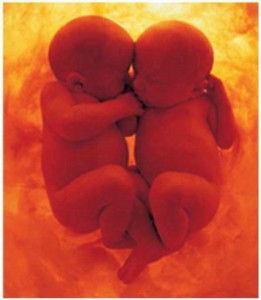Revealing One’s True Nature: Eshet Chayil (Part 9)
By Sara Esther Crispe: January 8, 2015: Category Decoding the Tradition, Inspirations
גמלתהו טוב ולא רע, כל ימי חייה
“She will bestow upon him good and not bad all the days of her life.”
 It is fairly common for people to be judged by their families. After all, if one spent years living in a certain environment, how could it not influence and infiltrate into that person’s personality? We’ve all heard the phrase, “The apple doesn’t fall far from the tree.” Right? Well, not always. We find that with few exceptions, the Matriarchs and Patriarchs— the role models for the entirety of the Jewish people—had people, personalities and events in their backgrounds that most definitely should never be emulated.
It is fairly common for people to be judged by their families. After all, if one spent years living in a certain environment, how could it not influence and infiltrate into that person’s personality? We’ve all heard the phrase, “The apple doesn’t fall far from the tree.” Right? Well, not always. We find that with few exceptions, the Matriarchs and Patriarchs— the role models for the entirety of the Jewish people—had people, personalities and events in their backgrounds that most definitely should never be emulated.
How could this be? Shouldn’t we have our greatest leaders be righteous people that were raised by righteous people and in righteous environments?
And yet there is a powerful statement that explains specifically why this is the case:
“Since God knew that the Jewish people would be spread out among the nations when in exile, and typically one is influenced by his surrounding culture, He wanted our matriarch and patriarchs to be among evil people and withstand their influence,” (Tifferet Tzion).
Rebecca’s family most definitely fit the bill. She had a father who was known for her deceitfulness and manipulation and a brother that tried to poison and kill the very person that made the match between Rebecca and her husband (Rashi, Genesis, 25:51).
Furthermore we see, in relation to Rebecca if we fast forward a bit, that when she struggled with infertility, both she and her husband prayed desperately for a child. The text then tells us that it was Isaac’s prayers that were heeded and answered. On the surface it could appear that this was because Isaac was born to two righteous parents (Abraham and Sarah) and therefore his background and pedigree was far superior. But the true reason is that Rebbeca asked that her husband’s prayers be answered for he was a righteous son of righteous parents. Yet Isaac’s prayers were that they be blessed with a child in the merit of his wife for she was a righteous person who was the daughter of an evil father. The fact that she endured her childhood and negative influences and despite that not only wasn’t affected by their behavior but overcame those obstacles to be a righteous person herself, that was far more impressive and deserving of reward than anything he had been through in life. And that was the argument that won so that is why his prayers were answered.
As vastly and drastically different Rebecca was from her father and brother, they did share one quality: consistency which is the focus of this verse. Her father and brother consistently did, at any cost, what they wanted and what would benefit them. Whereas Rebecca consistently focused on the needs of others, recognizing and being able to differentiate between truth and falsehood from a very young age. She was consistently reliable and consistently did what needed to be done for the best of the Jewish people.
Rebecca comes onto the stage when the servant of Abraham, Eliezer, is sent to find a wife for Abraham’s son, Isaac. He decides that his test will be to find someone who will not only offer to provide him water from the well but will also offer water to his camels. When he meets Rebecca she immediately offers him the water he needs and continues to offer water and satiate all ten of his camels.
As will be discussed in more detail in the section describing the Gimmel, the letter that begins the verse, it should be mentioned here that one of the meanings of the root of this letter means ‘camel’ (gamal). Clearly the fact that the verse begins with the letter that is related to the camel which is one of the most commonly known ideas of Rebecca, shows the interconnectedness of this unique text. Furthermore the meeting of Isaac and Rebecca is referred to as the first example as love at first sight, and we are taught that she was so smitten by him when she first saw him that she fell off her camel (Genesis 24:64).
While Rebecca never had the chance to meet her mother-in-law as Sarah had passed earlier, she was foundationally connected to her in her ability to continue the three miracles that Sarah embodied. As was discussed in Part 6, when Rebecca entered Isaac’s tent, the three miracles related to Sarah (and representing the three primary commandments of the Jewish woman) all returned upon her presence (Genesis 24:67).
Rebecca allowed for the consistency of the wonderful attributes of Isaac’s mother into his life following her death and bridged the gap and profound loss he felt with her absence. Her Hebrew name alludes to this (Rivkah) in that the three letter Hebrew root (Reish, Beit and Kuf) means “to tie, bind or join” which is what she did. More so, another meaning of the root of the letter Gimmel which begins the verse is ‘gamla’ meaning ‘bridge.’
Perhaps the most confusing part of Rebecca is that she is credited for her morality, her honesty and her uprightness, and yet, later in her life she appears to deceive her very own husband at the expense of her very own child.
While to properly explain this whole situation would require a book unto itself, it is vital that this be addressed as consistency and doing “good and not evil,” (the two key qualities which are the focus of this verse), requires one to look beyond the obvious and think outside of the box to do what is “right” even when it might not appear to be so to others at a first glance.
After twenty years of infertility, Rebecca gave birth to twin boys. Yet from before their births she knew that something was quite wrong. One of her babies would kick and move whenever she would pass a house of Torah study. However, the other one would react as intensely when they would pass a place of idol worship and immorality (Midrash: Bereishit Rabba, 63:6).
Here we have two righteous parents, two wonderful human beings, and they give birth to two very different personalities and children. This, in and of itself, is a huge lesson. We already see in Rebecca that just because she had an upbringing of negativity and corruption and was able to maintain her sense of morality and goodness within that, so too the reverse can be true. Children, both for the good and the bad, are not always representative of their families.
So often when we see a “problem” child, a child who lashes out, is violent, or has other behavioral issues, we immediately blame the parents. After all, something must be going on in that home if the child is like that. And yet, the Torah here is showing us that we can do all the right things and that does not guarantee that we will not have children that have issues or problems. They are not necessarily reflective of something we have done as parents. They are not our fault. However, they are our responsibility.
A good parent is not one whose child has nothing wrong. A good parent is the one who when something goes wrong deals with it. Addresses it. Acknowledges it.
With Rebecca we see that from before her children were even born she was well aware that they would need to be parented differently and that she could not be blind to the very real issues that would present. Ignoring problems out of love for our children is not true love as their problems will not diminish if we pretend they are not there.
 Rebecca knew Jacob was intended to be the first born son. And yet his brother, who would spend his life immersed in immorality of the vilest nature including the murder of others, pushed his way out first, with Jacob unable to get past and assume his true place. This is why Jacob’s Hebrew name (Yaakov) shares the root ‘eikev’ which means ‘heel’ thus referring to his brother’s heel that he was grabbing when he was born.
Rebecca knew Jacob was intended to be the first born son. And yet his brother, who would spend his life immersed in immorality of the vilest nature including the murder of others, pushed his way out first, with Jacob unable to get past and assume his true place. This is why Jacob’s Hebrew name (Yaakov) shares the root ‘eikev’ which means ‘heel’ thus referring to his brother’s heel that he was grabbing when he was born.
So in essence, the second born child was born first but the true firstborn was Jacob. Therefore, when Rebecca dressed Jacob to appear as if he was Esau and to then inherit the birthright intended for the firstborn, she was being consistent in her desire to do “good and not evil” all the days of her life. Of course she risked her behavior being seen an deceitful, as dishonest and therefore improper, but she was motivated by the need for the true order to be restored was consistent in her mission to reveal what is right, even when the path to get there may be misinterpreted as wrong.
In Part 10 we will discuss the letter Gimmel and how consistency and stability are inherently related.
Interinclusion is thrilled to announce that it is in the process of writing its first book to be published ideally by the Spring of 2015. It is an in-depth exploration of the text of Eshet Chayil (“A Woman of Valor”), the quintessential text honoring the Jewish woman. We would like to share parts of the material with our readers so we will be publishing sections from each chapter. We welcome your feedback and comments!






















;)
;)
;)
;)
;)
;)
;)
;)
;)
;)
